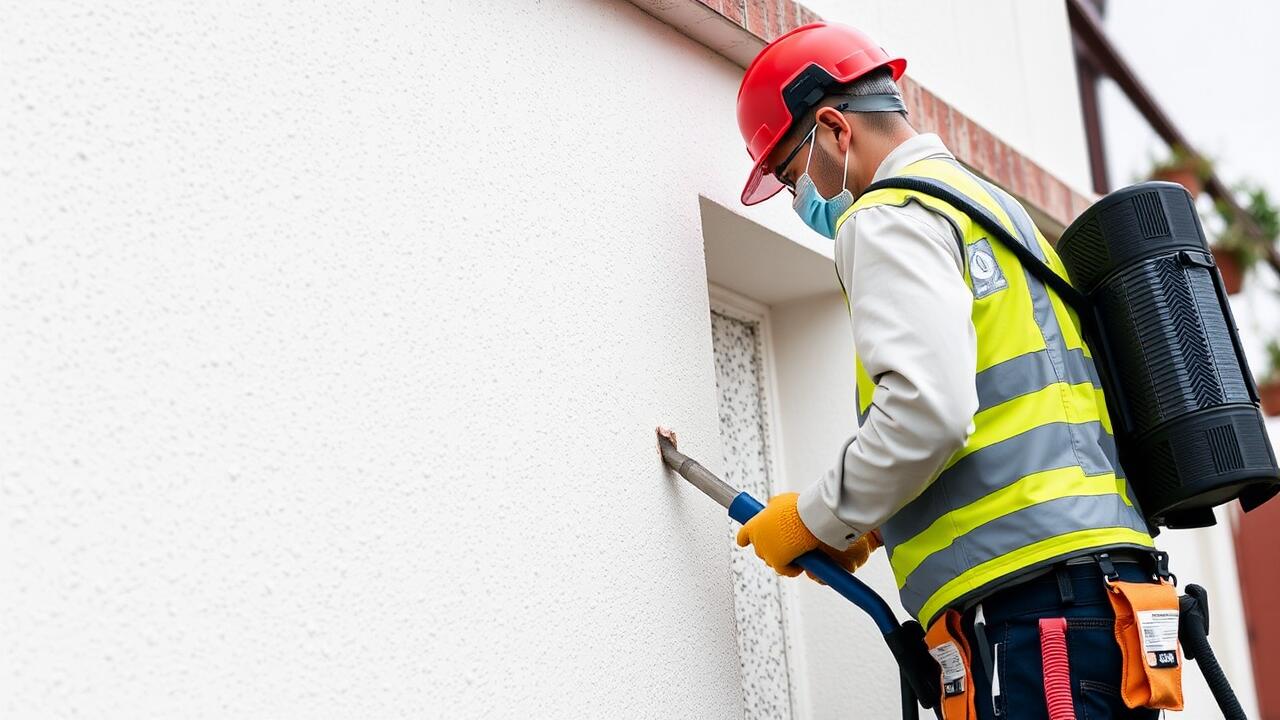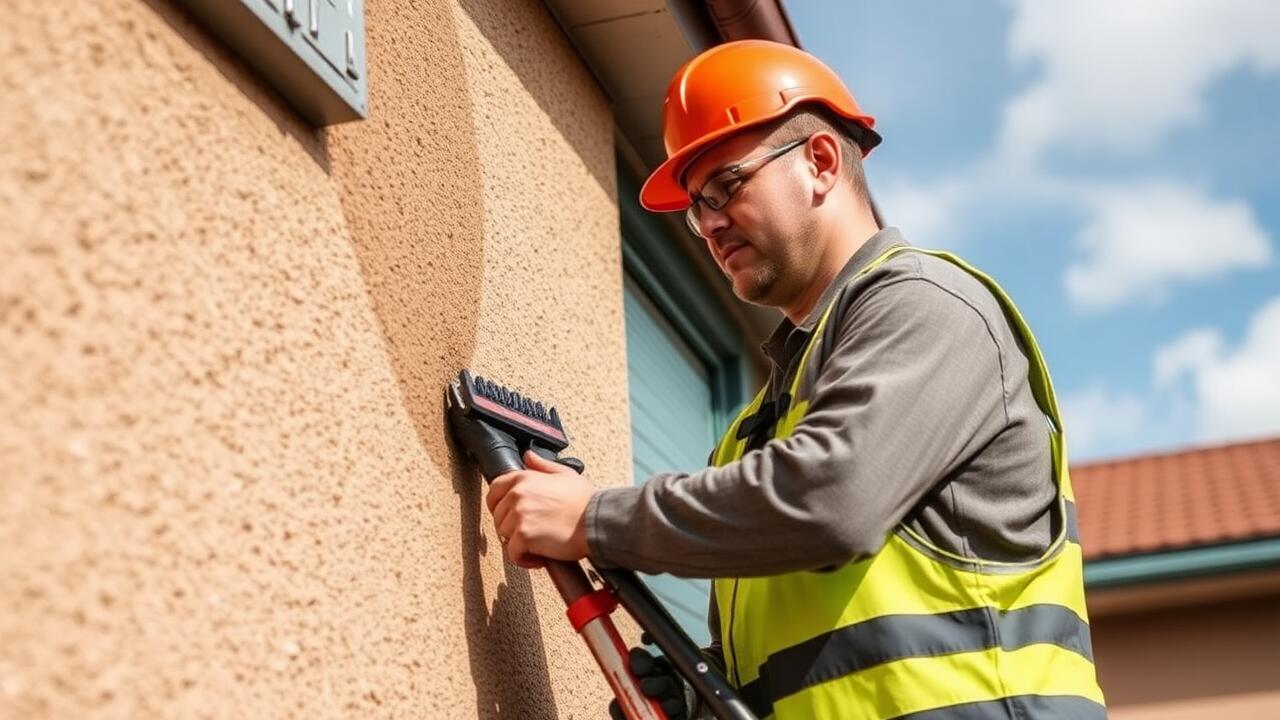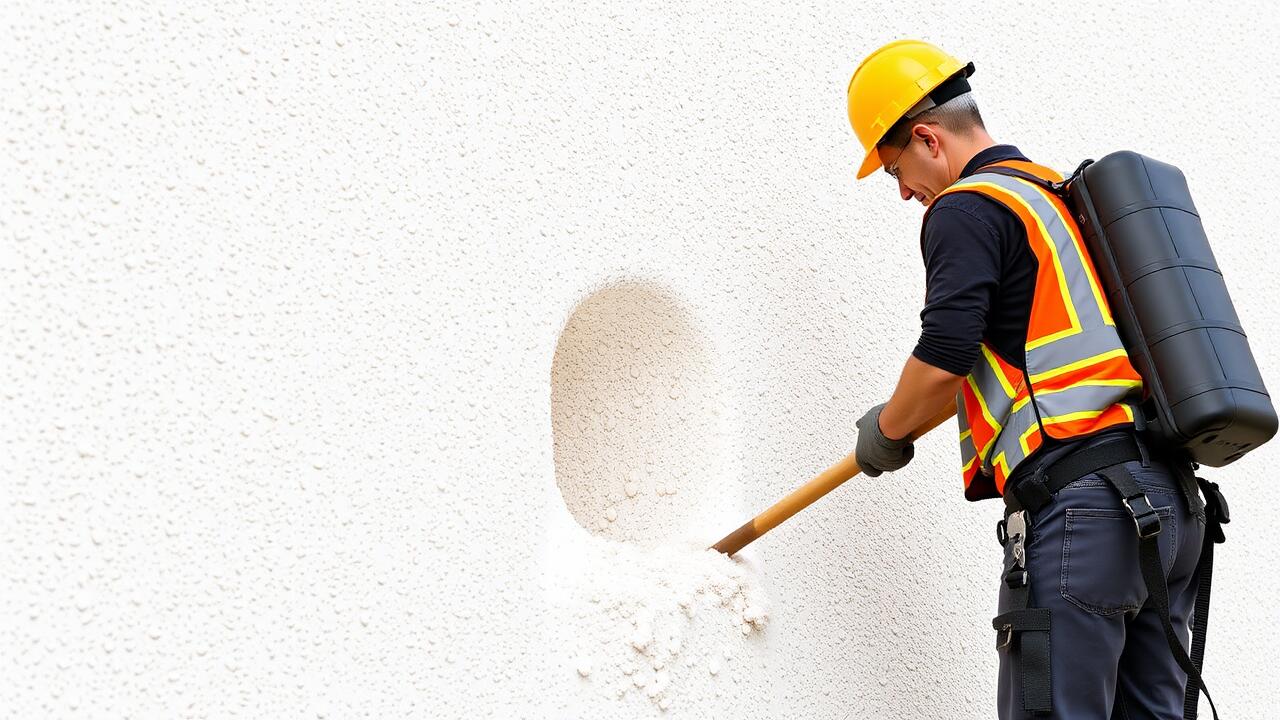
Managing Asbestos Concerns
When undertaking Stucco Removal in Venice, Los Angeles, it is crucial to assess the potential for asbestos-containing materials in older buildings. Asbestos was commonly used in building materials until the late 1970s, making it a significant concern during renovation projects. Homeowners and contractors should conduct thorough inspections. Proper testing protocols can identify the presence of asbestos before any work begins. This helps minimize risks and ensures compliance with local regulations.
If asbestos is suspected, it is essential to engage licensed professionals who are trained in handling hazardous materials. Disturbing asbestos can release harmful fibers into the air, posing serious health risks. Following state and federal guidelines is vital for safe removal and disposal. Professionals will implement necessary measures to contain dust and prevent exposure, enabling a safer workspace for everyone involved in the stucco removal process.
Identifying and Handling Asbestos-Containing Materials
Identifying asbestos-containing materials is crucial during any demolition or renovation project, especially for older buildings. In many cases, stucco, particularly those applied before the 1980s, can contain asbestos fibers. Homeowners in areas such as Watts, Los Angeles should be vigilant. It is advisable to have materials tested by a certified professional before beginning any work. Visual identification can be misleading, and laboratory testing provides definitive results.
Handling asbestos-containing materials requires strict adherence to safety protocols to minimize health risks. During stucco removal in Watts, Los Angeles, proper personal protective equipment (PPE) must be worn, which includes disposable coveralls, gloves, and respirators equipped with HEPA filters. Only qualified individuals should attempt to remove any suspected materials. Proper containment and wetting down materials can help prevent the release of harmful fibers into the air, which is vital for maintaining a safe work environment.
Ventilation Requirements
Proper ventilation is crucial during stucco removal, especially in areas like Watts, Los Angeles, where crews may be working in confined or partially enclosed spaces. Adequate airflow helps to disperse harmful dust and particulate matter released during the process. This is essential for protecting both the workers and the occupants of nearby structures from respiratory issues and other health hazards.
Before beginning the work, it is important to evaluate the site and implement effective strategies to enhance ventilation. This may include opening windows, using exhaust fans, or employing specialized air filtration systems to keep the air clean. Prioritizing ventilation not only supports a safer work environment but also ensures that the stucco removal process proceeds as smoothly as possible.
Importance of Airflow During Removal
Proper ventilation is critical during stucco removal to minimize the risk of inhaling dust and potentially harmful particles. Airflow helps to dilute any airborne contaminants that may be released during the removal process. In areas like Watts, Los Angeles, where older structures may have layers of materials that could contain asbestos, adequate ventilation becomes essential for worker safety and overall site health.
Implementing strategies to ensure consistent airflow can involve opening windows, using exhaust fans, or employing air scrubbers. Such measures enhance the dispersal of hazardous particles, reducing the likelihood of respiratory issues. Those engaged in stucco removal in Watts, Los Angeles, should prioritize these ventilation techniques to create a safer working environment and to protect both workers and nearby residents from potential health hazards.
Handling and Disposal of Debris
Proper handling and disposal of debris is critical during stucco removal projects. Collect debris in heavy-duty bags or containers specifically designed for construction waste. This minimizes the risk of dust and particles spreading to surrounding areas. Ensure that all materials are disposed of in accordance with local regulations. In areas like Watts, Los Angeles, it is essential to be aware of designated disposal sites for construction debris, as these locations can vary across the city.
Before beginning demolition, establish a plan for waste removal to avoid any delays. Inspect the area regularly to keep track of waste accumulation. Avoid overfilling containers to ensure safe transport. Workers should wear protective gear when handling debris to minimize exposure to hazardous materials. Effective waste management not only supports a cleaner job site but also enhances overall safety during stucco removal in Watts, Los Angeles.
Safe Practices for Waste Management
Proper waste management is crucial during stucco removal in Watts, Los Angeles, to minimize environmental impact and ensure safety. All debris should be collected promptly and stored in designated containers that can withstand the weight and nature of the materials involved. Using heavy-duty plastic bags or sturdy bins will help prevent leaks and airborne particles from escaping into the environment. It is vital to clearly label these containers to indicate that they may contain hazardous materials, especially in cases where asbestos is suspected.
When it comes to disposal, following local regulations is mandatory to avoid fines and potential legal issues. Contacting a licensed waste disposal company familiar with hazardous materials is recommended for safe and responsible handling. Ensure that all workers are trained in proper disposal techniques before commencing the project. This practice not only protects the environment but also promotes community safety during stucco removal in Watts, Los Angeles.
FAQS
What are the safety precautions to take before starting stucco removal?
Before starting stucco removal, it is important to assess for any asbestos-containing materials, ensure proper ventilation, and gather personal protective equipment (PPE) such as masks, gloves, and goggles.
How can I identify if my stucco contains asbestos?
To identify asbestos in stucco, you can look for buildings constructed before the 1980s, as they are more likely to contain asbestos. However, the best approach is to have a professional conduct a materials test.
Why is ventilation important during stucco removal?
Ventilation is crucial during stucco removal to minimize the inhalation of dust and harmful particles, ensuring that fresh air circulates and reduces the risk of respiratory issues.
What are the recommended practices for handling and disposing of stucco debris?
Recommended practices include sealing debris in heavy-duty plastic bags, labeling them as asbestos-containing if applicable, and disposing of them at a licensed waste facility to comply with local regulations.
What personal protective equipment (PPE) should I wear while removing stucco?
You should wear a high-quality respirator or mask, protective goggles, gloves, and a disposable or washable coverall to protect against dust and potential toxins in the stucco material.


